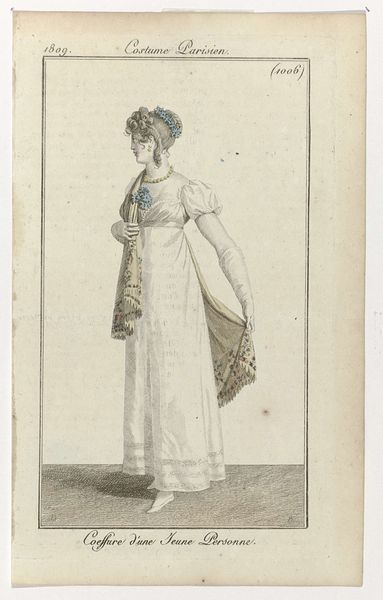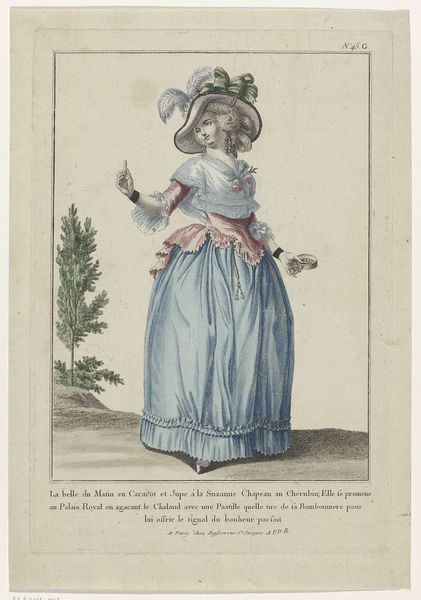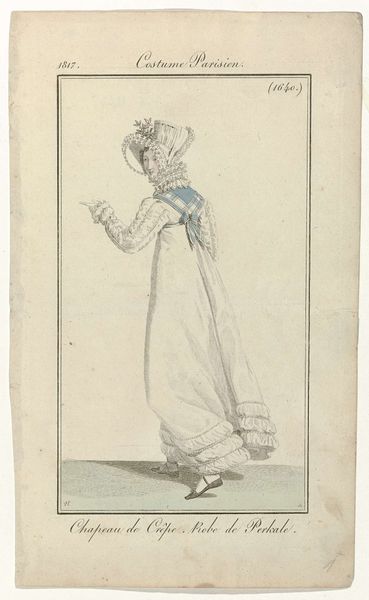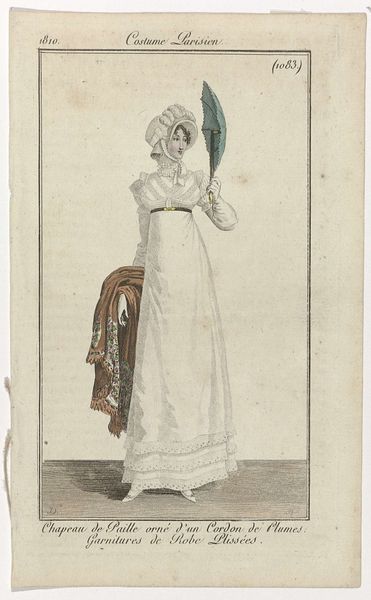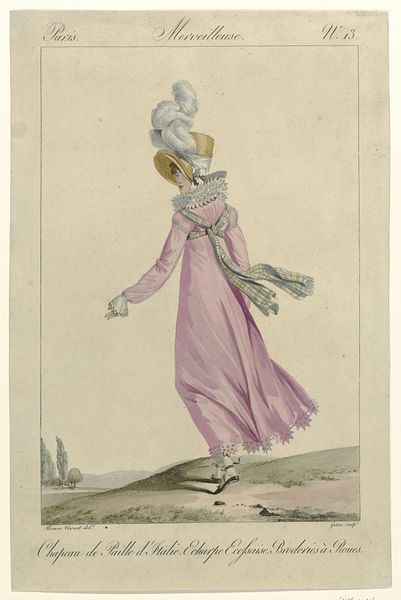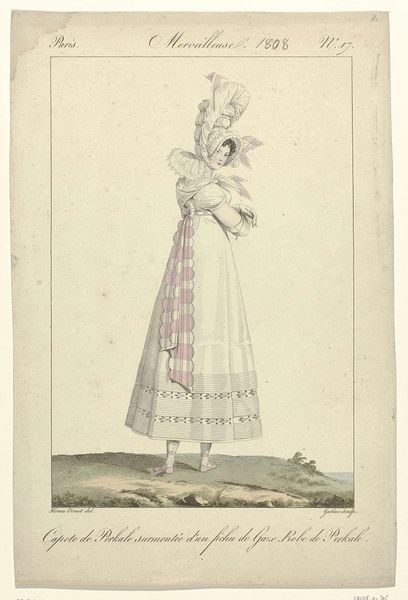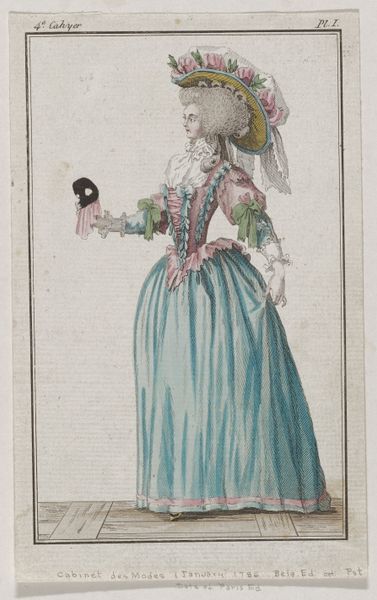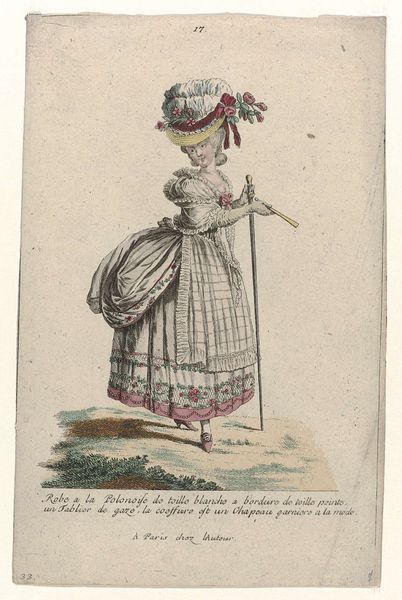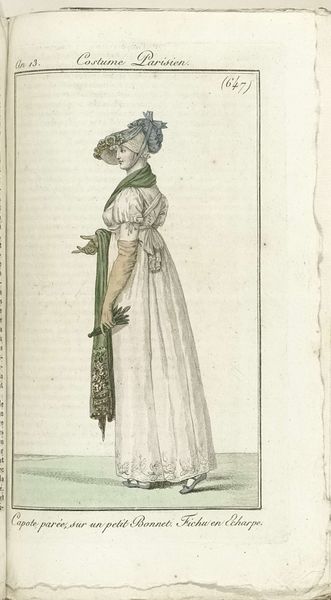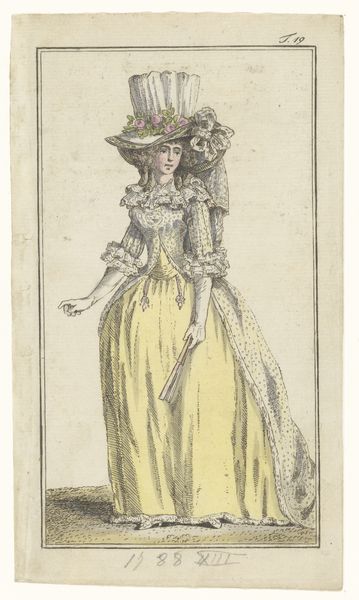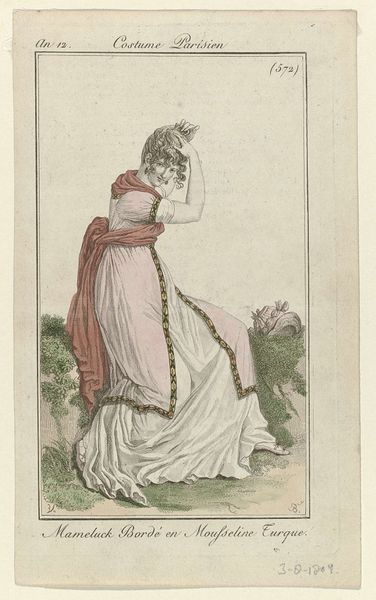
Journal des Dames et des Modes, Costume Parisien, 30 juin 1813, (1322): Capote de Perkal (...) 1813
0:00
0:00
pierrecharlesbaquoy
Rijksmuseum
painting, print, watercolor
#
portrait
#
neoclacissism
#
painting
# print
#
watercolor
#
watercolour illustration
#
genre-painting
#
dress
#
watercolor
Dimensions: height 177 mm, width 110 mm
Copyright: Rijks Museum: Open Domain
Curator: Let’s talk about this print, “Journal des Dames et des Modes, Costume Parisien, 30 juin 1813”, by Pierre Charles Baquoy, dating back to 1813. It’s a watercolor, quite delicate in its rendering. Editor: Oh, how utterly charming! She looks like she's escaped straight out of a Jane Austen novel, though her expression suggests she finds gardening rather tedious, poor dear. The layers in that headpiece, though, are just amazing. Curator: The Journal des Dames et des Modes served as a crucial medium during this period, reflecting the aesthetic values and social stratification of early 19th-century France. Notice the high-waisted empire silhouette of her dress. It’s Neoclassical, linking back to ancient Greek and Roman ideals, and symbolizing a shift towards simplicity and reason. Yet the extravagant headdress displays more the late styles from the pre-revolution era. Editor: It's funny how the eye goes straight to the hat isn’t it? Perhaps the artist put a bit of his own playful critique into the portrait - he’s gently poking fun at these rigid ideals and how absurdly ornamented this "simplicity" still is. The way the colors subtly bleed into each other...it reminds me of dreams. Curator: Indeed! Consider how fashion periodicals became vital tools in disseminating cultural norms and even political ideologies. This print provides insight into the expectations placed upon women, linking domestic duties like tending roses with displays of fashionable elegance. We see here how women occupied this odd position between nature and industry through dress. Editor: And that watering can! Even its spout seems to have a certain elegance. I wonder, was she told to care for the flowers and that she could not be seen without a hat? Curator: Examining details such as the percale fabric mentioned in the title, allows us insight into the colonial context of early 19th-century textile production. Percale originated in India and demonstrates trade networks and cultural exchange alongside power structures and imperial exploitation. Editor: What's lovely here, for me anyway, is that the image is not didactic, or aggressive in the telling. It is up to us to consider those contexts now while she casually, reluctantly waters roses. Thanks for sharing this. Curator: It truly offers multiple entry points through which to understand the intersections of fashion, culture, and politics during a pivotal period in European history. I appreciated discussing it together.
Comments
No comments
Be the first to comment and join the conversation on the ultimate creative platform.
